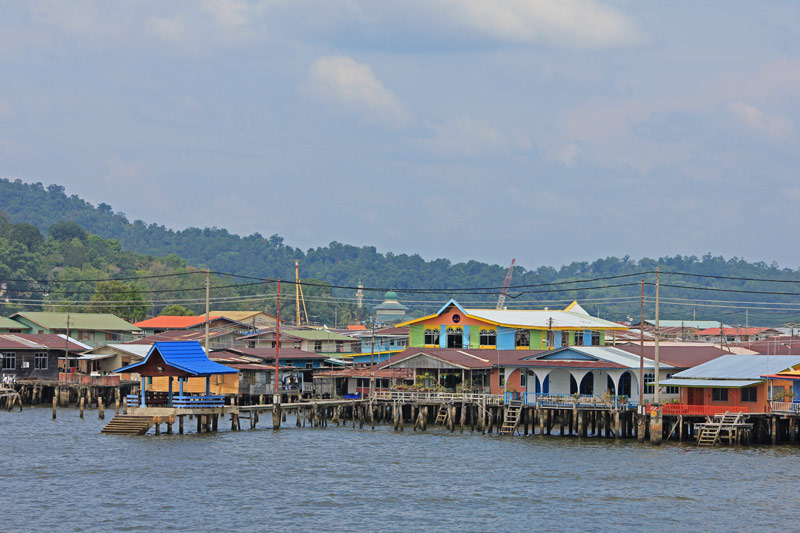

Situated
over the Brunei river in the heart of the capital city, the village has
over 4,000 houses, schools, police stations, clinics, markets and
mosques constructed on stilts.

In
local language, Kampong means village and Ayer water. The population of
the village is around 30,000, most of them fishermen but there are also
government officers and others working in the public sector.

Kampong
Ayer is equipped with basic and modern infrastructure. It receives a
substantial annual budget from the government due to its status as a
national landmark, says village head Haji Ahmed.
Kampong Ayer is the world's biggest settlement on stilts and has been existence for more than a thousand years, Ahmed said.

Archaeological
findings reveal that Kampong Ayer regularly shifted its location for
the comfort, safety and security of its inhabitants, until finally
setting at its current emplacement.
The
houses are physically unique with their simple yet sturdy nature and
modernisation has brought major changes with older materials being
replaced with wood, zinc and concrete for the roofs, columns and walls.
Wooden or concrete bridges link the houses. Each house is supplied with electricity and clean water.
There are police stations, a fire station, clinics as well as primary, secondary and religious schools.
Transport
lines, sanitation, garbage disposal system, petrol stations, grocery
shops, tourist centres, a community hall and a postal service are some
of the other amenities available.
People
of the village use boats for transportation, the affluent use motor
fibre boats and others wooden boats, said Nor Azme, project supervisor
in Brunei Tourism.
"Boat
making is still carried out on a small scale for the repair of fishing
boats and water taxis. Boats with motorised engines are now used as
water taxis," Azme told PTI.
Economic
activities in Kampong Ayer mainly focus on fishing and the production
of handicrafts has created job specialisation in different villages.
This has resulted in the villages being named after the products and economic activities found there.
Fishing
was usually carried out in the waters of Brunei Bay but there are some
villages still active in fishing such as Kampong Saba and Kampong Setia,
which use traditional equipment like balat (fish trap), tugu
(enclosure) and andang (net).
Kampong
Ayer was mentioned by the foreign visitors as the "Venice of the East"
or "Floating City". Its distinctiveness has led the settlement to become
one of the country's major tourist attractions.
No comments:
Post a Comment